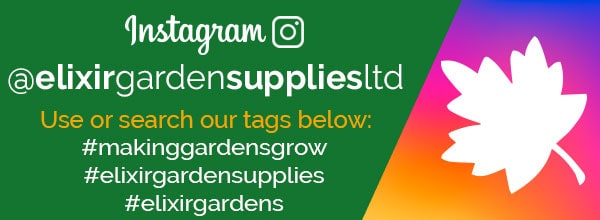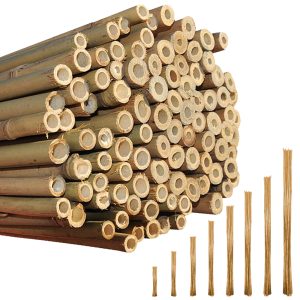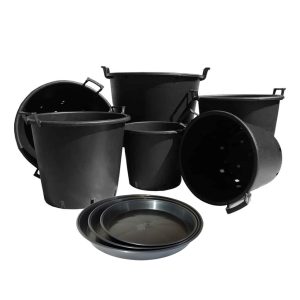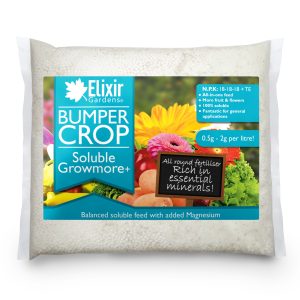Tomato Time Again
August is the perfect time for tomato cultivation. Chris demonstrates how to expertly care for growing Tomato plants and make the most your Summer crop!
Trialling Mixes
July & August sees the eager anticipation of the first ripe tomato, a fruit bursting full of flavour is certainly to be cherished after months of suffering the barely red tasteless offerings from the supermarkets. I still have tomatoes to plant but the majority of this year’s crop is now growing very well, almost too well in the recent hot weather.
Last year I trialled lots of different compost mixes using different ratios of peat or coir based composts mixed with composted shredded garden compost made from mixing hedge pruning’s and lawn clippings. To these I added Elixir’s EX4 fertiliser at varying concentrations.
Although the results were variable which I fully expected as I was pushing the boundaries on some of the mixes, all the various combinations cropped and all returned an acceptable yield for the effort involved.
There were four mixes however that stood out above all others, in fact even better than the straight out of the bag peat based compost from a leading national supplier which ran out of nutrients very quickly and was quite disappointing. I judged the mixes on both physical performance (able to support the crop, drain well and hold onto nutrients) and produce a very good yield.
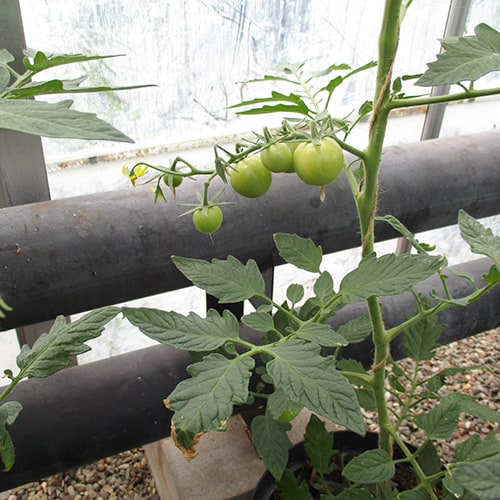
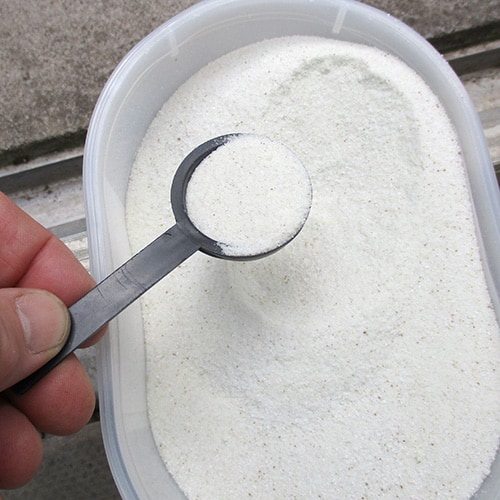
There was nothing to choose between the best performing mixes, which were:
50% Peat based compost: 50% garden Compost + 3 grams/litre of EX4.
66% Peat based Compost 33% Garden Compost + 2 grams/litre EX4.
50% Coir: 50% garden Compost + 3 grams/litre of EX4.
66% Coir 33% Garden Compost + 3 grams/litre EX4.
All four mixes out performed everything else including both 100% peat and 100% coir based composts. I adjusted the amount of EX 4 to ensure that the second mix was not over supplied with nutrients.
Based on the success of last year all of my tomato planting for this season has so far been into 50% Coir: 50% garden compost plus 3 grams / litre of EX4 and the results are really evident.
Choosing your Potting Medium
The coir blocks supplied by Elixir are really easy to re-wet in a wheelbarrow with the right amount of water as per the instructions and once this is done which usually takes around 20 minutes the garden compost and EX4 is mixed in – easy !. A great planting compost which is very economical and peat free.
Irrigation & Liquid Feeds
I now have lots of tomato fruits forming, and at this time of the year correct nutrition is essential both to ripen the fruit and keep the plants growing. All of my tomatoes are grown in tomato rings of compost which sit on a bed of pea gravel. They are watered by a drip irrigation system but fed the old fashioned way by watering can. Rather than use one feed product throughout the season I have found I get much better results by using a combination of:
High Potassium Soluble Feed 15-7-35 +TE
Bumper Crop Soluble Tomato Feed 7.5-12-36 + TE
The compost in the ring will supply more than enough Nitrogen for the first couple of trusses of tomatoes set, therefore I use the soluble tomato feed early in the season at around 10grams in one gallon of water, applied weekly per three rings.
The lower Nitrogen and slightly higher Potassium content of this fertiliser helps to prevent too much leaf growth, in commercial crops this balance is very precisely controlled in order to create osmotic pressure in the nutrient solution to prevent the plant taking up too much water and growing too fast and stress it into setting fruit! This essentially then ensures a better fruit set on the lower trusses, a problem that really plagues crops grown in soil where often the excess of Nitrogen means the crops romp away at the expense of fruit set.
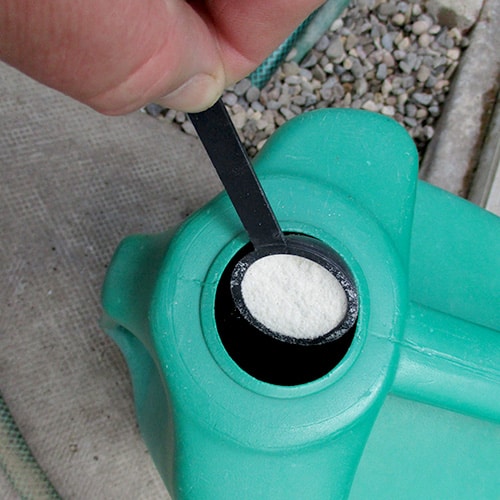
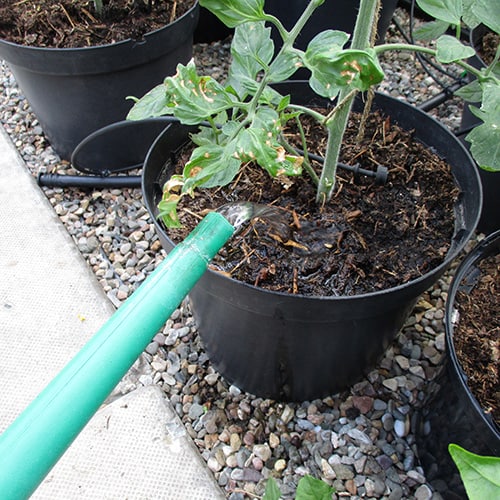
Supporting Fruits
Later in the season when the ring has exhausted its Nitrogen supply and the plant is stressed from carrying around 3-4 trusses of tomatoes, good fruit set is then not such a problem.
I then switch to the High potassium feed, mainly to boost the amount of Nitrogen the plant has and to maintain healthy growth.
Without the additional Nitrogen plants grown in rings soon look very yellow with poor growth, which in turn leads to smaller trusses of fruits.
For my growing system on ring culture this approach really works.
Both fertilisers are really easy to mix, I use a 10 gram measuring spoon and drop the measured amount of fertiliser into the watering can and add water.
Both fertilisers dissolve completely and in my opinion offer the best value for money of any Tomato or high Potassium fertiliser – just compare the amount of plant food in these products to other Tomato Fertilisers on the market, which may be packaged into fancy bottles with very technical measuring caps but pound for pound are nowhere near as good!
Share This Blog
Featured Products
-

Bamboo Garden Canes | Heavy-Duty Plant Support | 2ft – 10ft
£5.49 – £129.99 Select options This product has multiple variants. The options may be chosen on the product page -

Woven Ground Cover with Optional Pegs & Staples
£4.99 – £199.99 Select options This product has multiple variants. The options may be chosen on the product page -

Large Pots with Handles | Optional Saucers | 30 – 130 Litre Sizes
£9.99 – £192.99 Select options This product has multiple variants. The options may be chosen on the product page -

Magic Grow Tomato Feed | N.P.K 18-9-9
£6.29 – £29.99 Select options This product has multiple variants. The options may be chosen on the product page -

Bumper Crop Soluble Growmore | N.P.K: 18:18:18
£5.99 – £79.99 Select options This product has multiple variants. The options may be chosen on the product page -

EX4 General Purpose Premium Fertiliser | 5-7.5-10 + Trace Elements | Covers up to 750m² | 100g – 25kg Supplied in Bag or Tub
£5.99 – £63.99 Select options This product has multiple variants. The options may be chosen on the product page -

Bottomless Plant Pots | Tomato Ring Culture Planter | Black
£7.69 – £212.99 Select options This product has multiple variants. The options may be chosen on the product page
